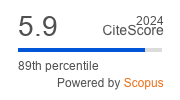Article | Open Access
Online Emotional Landscape of Government and Parliament Communication in Times of Crisis
| Views: | 2213 | | | Downloads: | 2274 |
Abstract: This study examines how social media users emotionally respond to Israeli politicians’ messages during crises based on political alignment and crisis type. With Israel’s frequent civic and military crises, the case study in this article aims to offer unique insights to scholars, practitioners, and the public invested in the intersection of online media, emotions, and crisis. To this end, we built a dataset of Facebook posts (N = 25,000) published by all active right, left, and center members of the Israeli parliament and government over a period of one year (November 2022–November 2023). We ensured that the dataset includes both routine and crisis periods, particularly the judicial reform unrest (civic crisis) and the Hamas–Israel war following the October 7 attack (military crisis). Our statistical analysis indicated two major trends in the dataset: (a) during the military crisis, emotional markers that were previously considered to correlate and cluster (sad and angry) are not merely different, as they stand in opposition to one another; (b) crisis periods, especially military, invite use of “edge” reactions, and see a significant increase in negative emotions, whereas routine times prompt more neutral or positive reactions. Reading the findings through the combination of affordances theory, mediatization theory, and the “template for emotions” concept, we suggest that social media may amplify negative reactions beyond politicians’ influence, as the limited emotional spectrum offered on platforms might steer users to certain emotive responses, affecting risk management in crises. These insights call for decision-makers to consider the implications of emotional appeals and incentives on social media, especially during crises, to foster safer democratic public discourse.
Keywords: affordances; audience reactions; crisis; emotions and politics; Facebook; judicial reform; political communication
Published:
© Aya Yadlin, Gal Yavetz, Jenny Bronstein. This is an open access article distributed under the terms of the Creative Commons Attribution 4.0 license (http://creativecommons.org/licenses/by/4.0), which permits any use, distribution, and reproduction of the work without further permission provided the original author(s) and source are credited.


